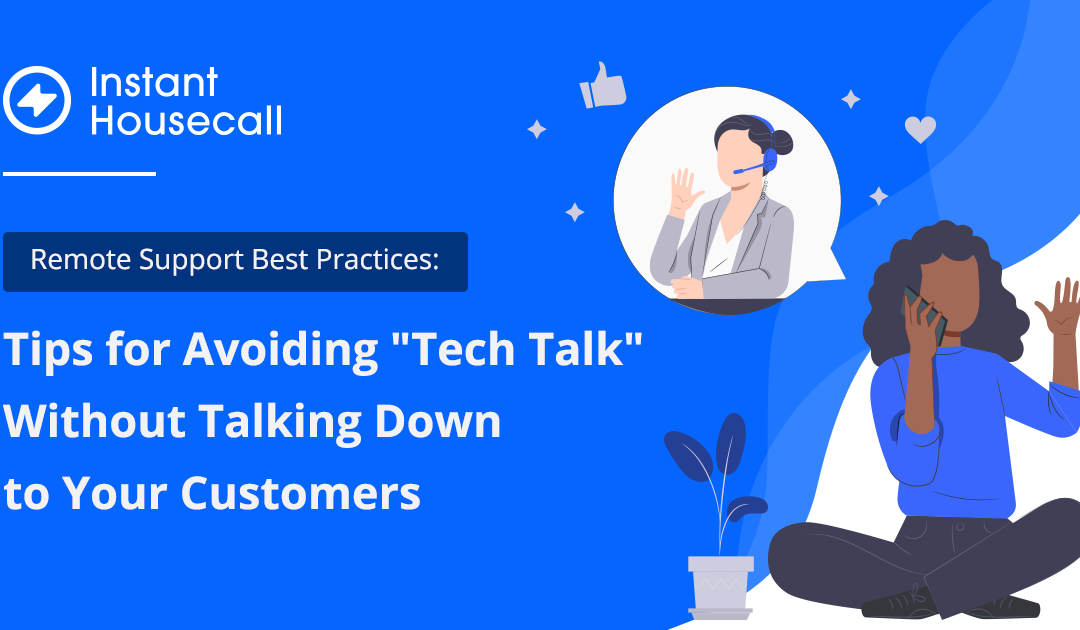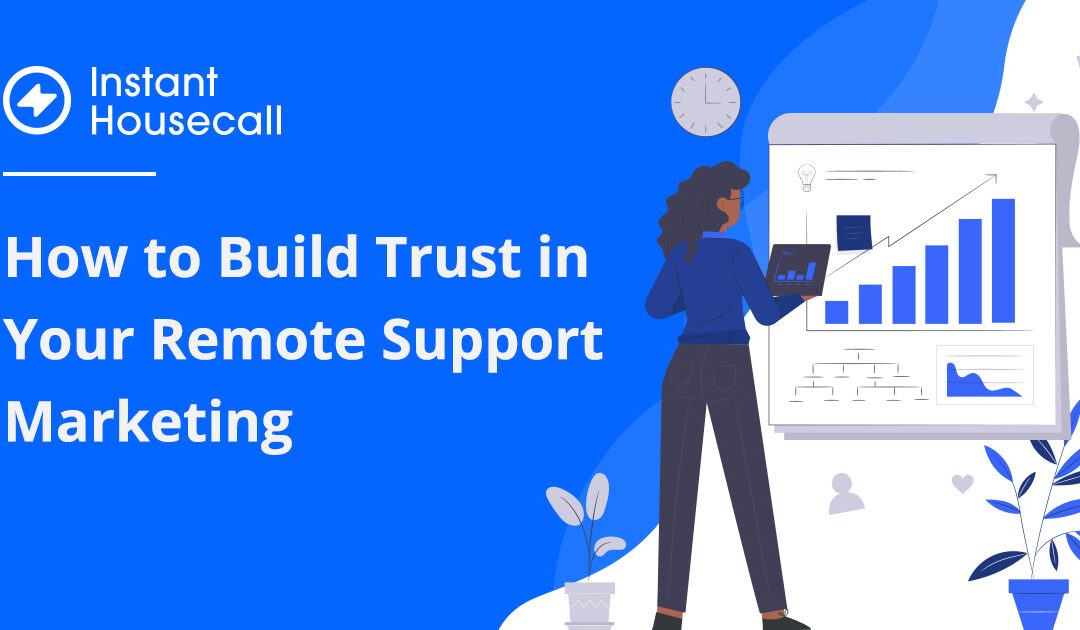
Remote Support Best Practices: Tips for Avoiding “Tech Talk” Without Talking Down to Your Customers
A famous quote from Einstein is, “If you can’t explain it simply, you don’t understand it well enough.”
There are two common frustrations with people that are dealing with any type of technology company, from their cable company to their IT provider. These are:
- Hearing technical jargon and having no idea what it means; and
- Getting talked down to like they’re a child.
Balancing those two can be challenging for a technology business owner, but it’s important if you want to keep good customer relations and continue growing your customer base.
42% of people will switch service companies if they feel put off by rude or unhelpful staff.
There’s a fine line during remote support sessions between oversimplifying and being way too technical in your explanations of an issue and resolution. But when you hit the sweet spot between the two, you can have a fruitful engagement with customers without any misunderstandings or hurt feelings.
The Problem With Speaking Tech Talk
When you speak in technology and IT jargon during a remote support session, what you say can go completely over the head of your client. You may think everyone knows what IP whitelisting means but find out later (when there is a problem) that wasn’t the case.
For example, say you’re adding an IT security measure that involves IP whitelisting. Your client only has a vague idea of what you mean, so when you ask if there are any other IP addresses to add to the whitelist, they say “no.”
Then a day or two later, you receive a frantic call because staff members suddenly can’t connect to resources. All the client knows is that something was working and now it’s broken because of something you did during your remote support session.
Had you noted that IP whitelisting looks at the virtual address of every device connecting to a system and blocks those not on the list you could have avoided a problem and a bad experience for your customer. They may have realized you were asking about the actual employee devices that needed to connect.
The Problem With “Talking Down” to Customers
On the flip side of speaking “tech talk” is speaking down to customers. No one likes to be disrespected, which is what they feel when they think they’re being talked down to.
They might feel that you’re wasting their time by over-explaining something that they already know. They can also end up feeling that they know more than you do because you’re speaking to them on such a low level of technical expertise.
How to Walk the Fine Line Between “Tech Talk” and “Talking Down”
Read the Room
When someone makes an inappropriate or irrelevant comment in a group, a friend might say to them, “Read the room!”
What this means for your remote support engagements is to cue from your client’s technical knowledge as you’re providing support.
If you’re getting ready to launch into an explanation of how email signatures work when helping someone with an email issue, pause and see if you’re getting some feedback. Such as, “Yes, I have my email signature set up already.” You’ll gain a clue into their technical knowledge and can adjust accordingly.
MSP providers can be working with customers at drastically different technology comfort zones, and you must be able to adjust how you explain an issue and resolution to match each level.
Watch Your Tone
When people feel talked down to, it’s generally about the tone of the support person. You can say the same exact thing and have it taken two different ways, depending upon your tone.
If someone is hearing a condescending tone in your voice, they will instantly go into defensive mode, which is going to make your work harder and strain the customer/business relationship.
You may not have any idea that you’re speaking in a “tone,” at all. But if you begin to get negative reviews that mention this, it’s a clue that you may need to make some adjustments.
Learn to Explain Things Simply Using Examples
Going back to the Einstein quote about explaining things simply, often an example is a great way to shed light on a technical explanation.
For example, say you’re trying to explain how memory impacts performance and why someone may need a memory upgrade.
If you launch into a monologue about 8GB of RAM compared to 12GB of RAM, you’re bound to lose some people.
Instead use an example and simple, understandable terms, such as:
“Memory, or RAM, impacts how many things you can do on a computer at one time. Expanding your system memory allows the PC to handle more programs being open at once and can respond faster to requests.
For example, I worked with a client having problems similar to yours with browser windows freezing, especially if they had videos or ads loading. We tripled their memory from 4GB to 12GB, and those freezing problems were eliminated. I think increasing your system memory will do the same for you.”
Use Speech Techniques for Better Remote Support Communications
One of the tenants of giving good speeches and training sessions includes these three steps:
- Tell them what you’re going to do.
- Do the thing.
- Tell them what you did.
Often support technicians might miss a step, causing confusion and leaving customers feeling uninformed.
Once you diagnose an issue, explain in simple terms what you’ll do to resolve it (rather than just jumping in keys flying).
Then once you’ve finished your session, you can explain the fix or resolution. One great way to do this when the client’s device may be unattended is to use remote support software, like Instant Housecall, that allows you to leave a visible “sticky note” on the customer’s computer. This neatly closes that communication circle.
Use a Remote Support Software That Makes Your Connections Easy
When you’re trying to explain and address an issue, the last thing you want is problematic remote connection software. Instant Housecall is a powerful yet easy-to-use remote support tool that makes your life easier so you can focus on your customer support.
Try Instant Housecall risk-free for 15 days and experience it for yourself!

Recent Comments